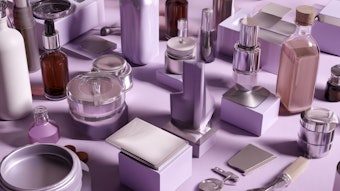“What Makes L’Oréal ‘Worth It’?,” a new analyst insight blog post from Euromonitor International senior analyst for home and personal care Oru Mohiuddin, looks at the elements that make the beauty giant such a force in the industry.
“It comes as no surprise that L’Oréal has posted yet another year of strong sales growth, exceeding 10% in nominal terms and 5% in organic terms for the fiscal year ending 2012,” Mohiuddin writes. “L’Oréal has been benefiting from its streamlined focus on beauty, allowing it to carry out more in-depth research and development and marketing, as well as its ability to identify future growth potential even in non-traditional channels and categories.”
She continues, “Having beauty as its sole focus, L’Oréal is able to channel all its funds into the industry and benefit from greater synergies in comparison with some of its competitors, such as Procter & Gamble and Unilever, whose focus is more diluted. L’Oréal claims to invest approximately $800 million in R&D, accounting for 3.5% of its total revenue, and the company boasts of having created 130 molecules in the last 40 years. L’Oréal is also a prudent marketer, incorporating its R&D findings into breakthrough product developments..”
In its targeting of growth markets, Mohiuddin writes, “L’Oréal has also proven to be incisive when it comes to identifying future market potential even in non-traditional beauty channels and categories. The company has been one of the pioneers to tap into the growth potential of dermatologically aligned brands globally. La Roche-Posay and Vichy, L’Oréal’s key derma brands, already had a strong presence in the company’s core market of France, but over the last few years the company has been expanding these brands beyond France. Between 2008 and 2012, Vichy and La Roche-Posay recorded growth rates of 17% and 31%, respectively. At a time when efficacy is of paramount importance in skin care, aiming to drive growth through dermatologically aligned brands is a prudent move as these brands enjoy greater credibility than mainstream labels. In addition, pharmacies and parapharmacies have strong penetration in Western beauty markets, accounting for shares of 20% in North America and 25% in Western Europe.”
She also writes, “L’Oréal showed keen insight in extending the skin care boundaries in the saturated U.S. market through the acquisition of the skin care device Clarisonic, which grew by 50% year-on-year in volume terms in 2012 as consumers believed the product to be more effective. In addition, the acquisition of U.S. specialist brand Urban Decay not only filled the void in the company’s portfolio for an accessible premium color cosmetics brand targeting younger, trendy and aspiring consumers, but it also allowed it to extend its presence beyond the saturated department store channel in the US. Furthermore, the Colombian color cosmetics brand Vogue is enabling the company to take advantage of the growing bricks-and-mortar retailing channel in Latin America.”
Looking ahead, Mohiddin writes, “Despite such achievements, there are areas L’Oréal has yet to take advantage of. The company has the potential to expand Garnier in China. Currently, Garnier is a relatively small brand in China, ranking only 15th in the country’s skin care category. Olay is the leading brand in skin care in China, but its category share declined from 9.36% in 2011 to 8.77% in 2012. Given the fact that Garnier and Olay operate within similar pricing bands, an opportunity exists for L’Oréal to take advantage of Olay’s falling share.”










